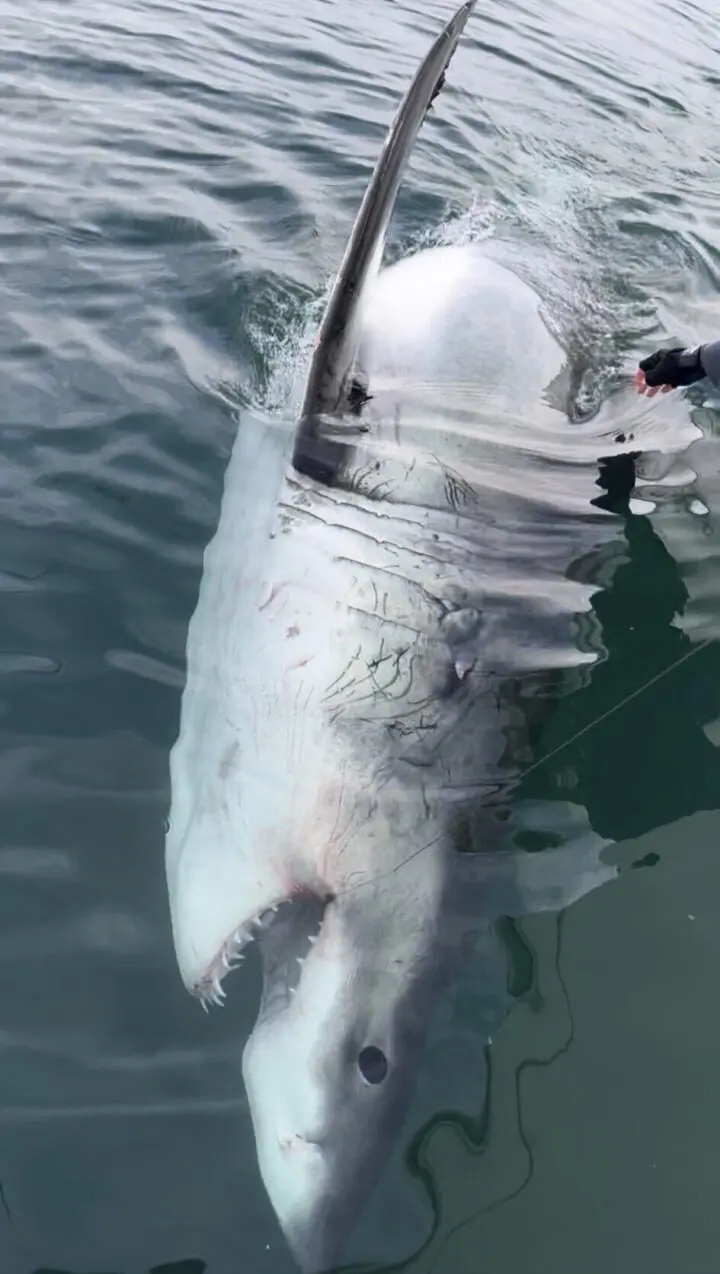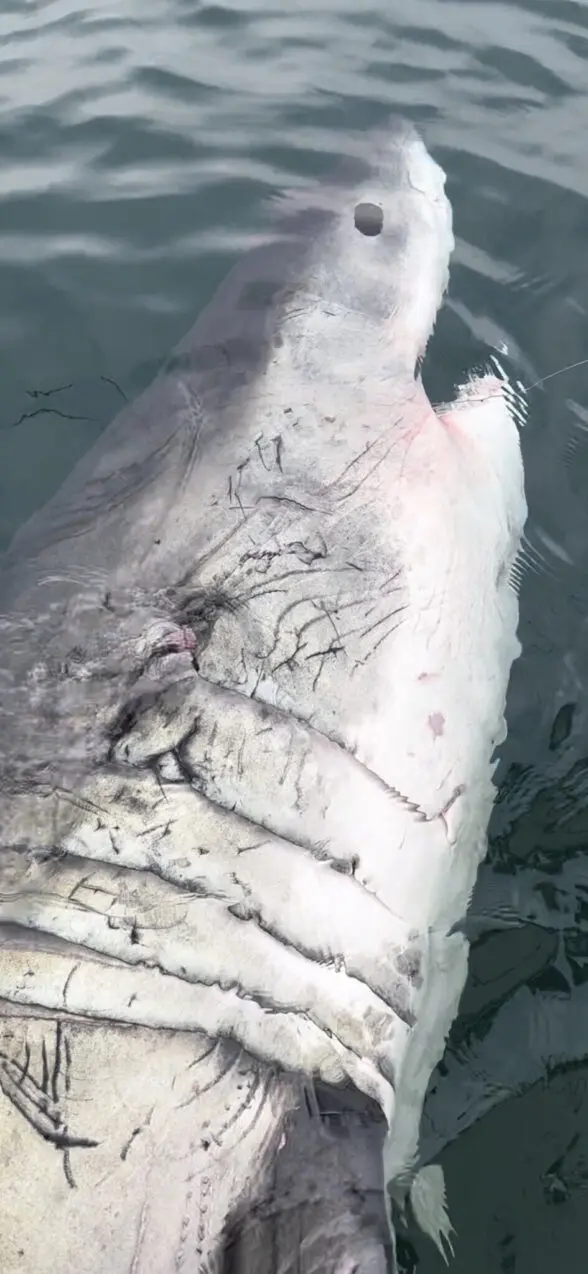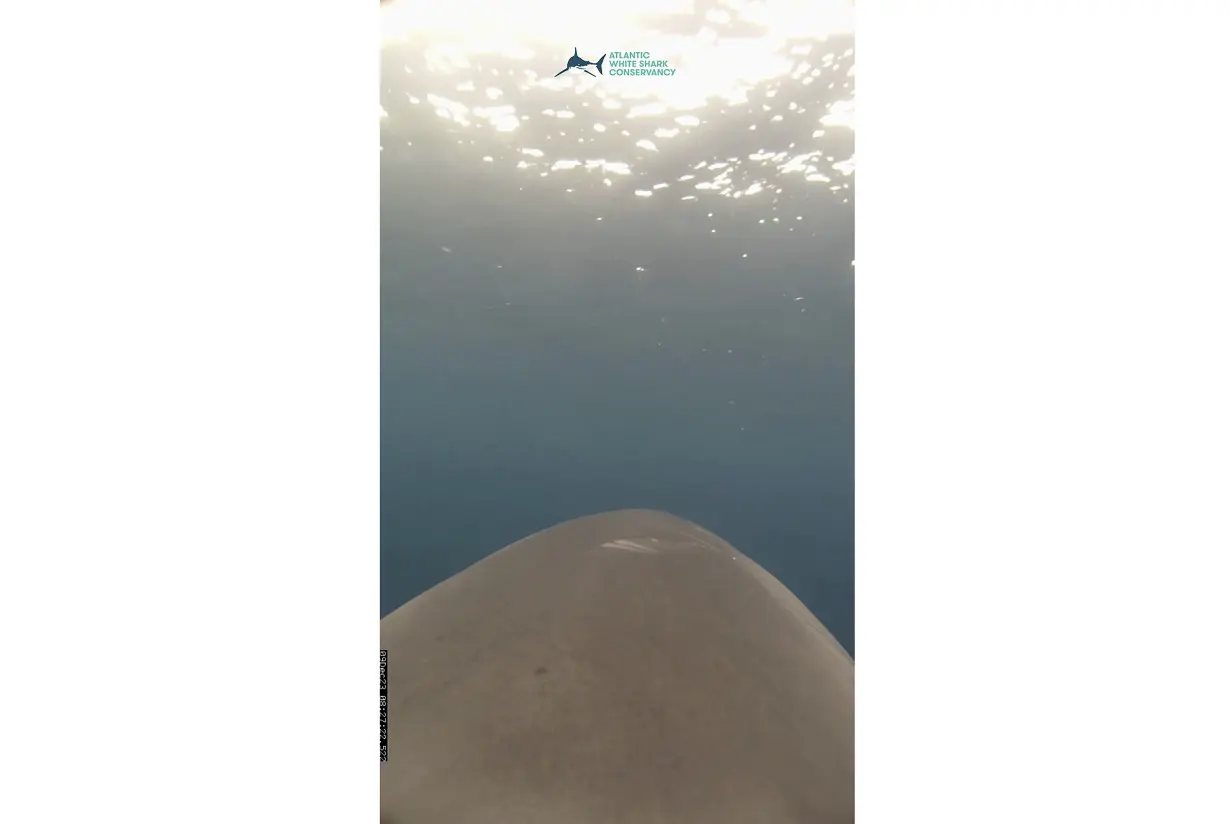As sharks go, LeeBeth is something like a long-haul trucker with gills and giant teeth.
Swimmers at the beach might not be excited to see the 14-foot (4.3-meter) white shark, but scientists following LeeBeth's movements are thrilled that the big fish's epic journey could provide valuable clues to help the species. And they're curious where she'll go next.
White sharks, often referred to as great whites, were made famous by the hit movie “Jaws.” They roam the ocean searching for their favorite food, marine mammals, and were once hunted without discrimination. Designated a protected species in 1997, some scientists believe growing populations of seals in parts of the Atlantic Ocean are helping the sharks.
Since getting her tracking device near South Carolina in December, LeeBeth has traveled more than 2,000 miles (3,200 kilometers) south and into the Gulf of Mexico, the scientists tracking her said Monday. They watched as she made history in late February by traveling further into the Gulf than any previously tracked white shark. A signal showed her off the coast near Matamoros, Mexico, which is just across the border from South Padre Island, Texas.

The shark's presence so far west indicates that this part of the Gulf of Mexico could also be important to other white sharks, said Megan Winton, a senior scientist with the Atlantic White Shark Conservancy, based in Chatham, Massachusetts. International cooperation is important to protect the sharks, which are recovering worldwide their populations after suffering from overfishing for decades, she said.
“We don't know how many white sharks travel that far west, but it's a good indication they do,” Winton said. “There are only a handful of sharks that have been tracked west of the Mississippi.”
The Atlantic White Shark Conservancy collaborates with Massachusetts state government to tag white sharks, and more than 300 have been tagged so far. Thousands more have been tagged by other organizations worldwide, Winton said.

The conservancy paired up with fishing charter Outcast Sport Fishing of Hilton Head, South Carolina, to tag LeeBeth.
Chip Michalove, who owns Outcast, said LeeBeth turned out to be an advantageous shark to tag, as she had sent more signals back from the tracking device than most. The tracker sends a signal when the shark breaks the surface of the water.
“Not only one of the biggest sharks we've caught, but she's the best-pinging shark as well,” Michalove said. “We definitely hit a home run with LeeBeth.”

The last time LeeBeth checked in was on March 7, when tracking data showed her about 100 miles (160 kilometers) off the coast of Galveston, Texas.

 Kashmir's saffron growers experiment with indoor farming as climate pressures mount
Kashmir's saffron growers experiment with indoor farming as climate pressures mount
 NHTSA closes probe on 313,101 Daimler US trucks over engine wiring concern
NHTSA closes probe on 313,101 Daimler US trucks over engine wiring concern
 France's PM Bayrou weakened by Socialists' threat to back no-confidence vote
France's PM Bayrou weakened by Socialists' threat to back no-confidence vote
 China hawk Rubio set for smooth confirmation as Trump's State Dept nominee
China hawk Rubio set for smooth confirmation as Trump's State Dept nominee
 Trump's US presidency return ushers in new era of volatile markets
Trump's US presidency return ushers in new era of volatile markets
 Bayern Munich signs US youngster Bajung Darboe from LAFC
Bayern Munich signs US youngster Bajung Darboe from LAFC
 Novak Djokovic breaks a tie with Roger Federer for the most Grand Slam matches in tennis history
Novak Djokovic breaks a tie with Roger Federer for the most Grand Slam matches in tennis history
 China's RedNote: what you need to know about the app TikTok users are flocking to
China's RedNote: what you need to know about the app TikTok users are flocking to







